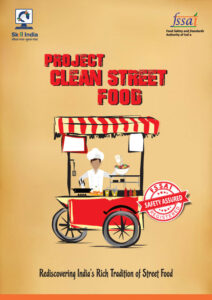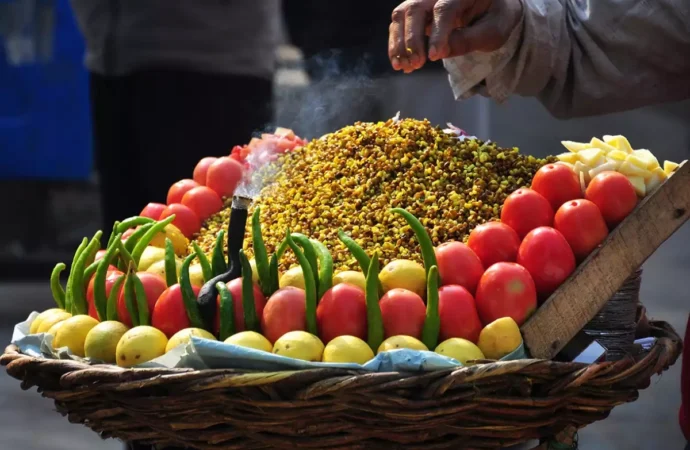Street food is a beloved part of India‘s culture, offering affordable, quick, and delicious meals that attract millions daily. From spicy chaats to vada pavs, street food vendors are integral to urban life across the country. However, the safety of street food is a growing concern. Despite various safety regulations, foodborne illnesses linked to street food continue to pose risks. This article explores the challenges surrounding street food safety in India and suggests practical solutions.
The Current State of Street Food Safety in India
India’s street food industry is largely informal, making it difficult to regulate vendors effectively. A 2017 study conducted in major cities like Hyderabad and Delhi revealed several concerning issues regarding food safety.
Key Issues:
- Vendor Registration: Only one-third of street food vendors are registered with food safety authorities like FSSAI, making enforcement of safety protocols challenging.
- Lack of Hygiene: Many vendors fail to adhere to basic hygiene standards, such as wearing aprons, using clean water, or washing utensils with soap.
- Absence of Refrigeration: The lack of refrigeration facilities makes it difficult for vendors to store perishable foods safely, particularly during the monsoon season.
- Increased Risk of Illness: Poor hygiene practices and improper food storage contribute to a higher likelihood of foodborne illnesses like diarrhoea, gastroenteritis, cholera, and typhoid.
These lapses in hygiene and food handling not only threaten public health but also tarnish the reputation of street food as a reliable food source.
Hygiene and Food Handling Challenges
The personal hygiene of food handlers is another significant concern. Many street food vendors fail to meet basic hygiene standards, which increases the risk of contamination.
Key Concerns:
- Protective Gear: A large number of vendors do not wear head covers, gloves, or clean clothing. A study in Kolkata found that 81% of food handlers didn’t use gloves, contributing to higher contamination rates.
- Unclean Hands and Nails: Many vendors fail to wash their hands properly or trim their nails before preparing or serving food.
- Reuse of Leftovers: Reusing leftover food from the previous day is common among 44% of vendors, further compromising food safety and quality.
These unsanitary practices not only heighten contamination risks but also damage public trust in street food as a safe and hygienic option.
Improving Street Food Safety

To address the street food safety concerns in India, a comprehensive approach combining regulation, education, and community involvement is essential. The following strategies can help improve food safety across the country:
- Education and Training
Street food vendors often lack formal training in hygiene and food safety. Workshops and outreach programs by local municipalities, health organizations, and NGOs can equip vendors with essential knowledge on safe food handling, storage, and cleanliness. - Community-Based Initiatives
Involving local communities is key to ensuring food safety. Vendor associations can help monitor hygiene practices and ensure adherence to safety protocols. Such associations also foster a culture of cleanliness and provide support systems for vendors to improve standards. - Leveraging Technology
Technology can play a pivotal role in improving food safety. Mobile apps and digital platforms can provide vendors with resources on hygiene, allow consumers to report violations, and help health inspectors track compliance in real-time. Additionally, these platforms can connect vendors with reliable suppliers of clean water, refrigeration, and food safety tools. - Financial Incentives
Many vendors work on tight margins, making it difficult to invest in necessary safety measures. Offering financial incentives, such as subsidies, low-interest loans, or tax breaks, can motivate vendors to improve their food safety practices. - Consumer Awareness
Educating consumers about the risks of unsafe food and encouraging them to choose vendors that prioritize hygiene can create market-driven demand for safer food. Public awareness campaigns can significantly influence consumer behaviour, motivating vendors to adopt safer practices.
Overcoming Challenges in Street Food Safety
Despite the significant challenges in improving street food safety, they can be overcome with a collaborative approach involving multiple stakeholders:
- Lack of Resources: Vendors often lack access to clean water, refrigeration, and proper training. Local governments can step in to provide essential resources and training programs.
- Informal Nature of the Industry: The unregulated nature of street food businesses makes compliance difficult to monitor. Formalizing the sector through vendor registration and establishing food safety zones like the “Clean Street Food Hub” can help ensure compliance.
- Limited Financial Support: Financial constraints prevent many vendors from investing in food safety infrastructure. Providing financial incentives, such as subsidies or low-interest loans, can help vendors improve their hygiene standards.
- Community Engagement: Involving both vendors and consumers in food safety initiatives is critical. Vendor associations and community-driven initiatives can help promote safe practices and increase accountability.
- Technological Challenges: Limited access to technology makes monitoring and compliance harder. Digital platforms can provide vendors with resources, enable real-time monitoring, and allow consumers to report safety violations.
By fostering collaboration between local governments, vendors, consumers, and health authorities, these challenges can be addressed, creating a safer street food environment in India.
Conclusion
Street food in India is an integral part of the nation’s culinary culture. However, concerns about food safety jeopardize its reputation and pose significant health risks. A holistic approach that includes vendor education, community involvement, technological solutions, and financial support is essential to ensuring the safety of street food. By addressing these issues, India can create a safer street food environment that protects consumers, supports small businesses, and preserves the cultural heritage of street food.
 Food Manifest
Food Manifest 


















